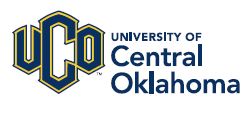Below is a summary of the abstract you submitted. Presenting author(s) is shown in bold.
If any changes need to be made, you can modify the abstract or change the authors.
You can also download a .docx version of this abstract.
If there are any problems, please email Dan at dar78@pitt.edu and he'll take care of them!
This abstract was last modified on May 2, 2018 at 10:43 p.m..

Bacteriophages are viruses that infect bacterial host cells, take control of the host’s replication machinery, and replicate inside the host cell. Our goals in this project were to isolate, characterize, and sequence a mycobacteriophage from Oklahoma soil. The mycobacteriophage Silverleaf was isolated from water runoff soil located in a backyard. The area was boggy with dead foliage covering the topsoil, which is an ideal environment for mycobacteriophages. We used soil enrichment method and agar overlay method for isolating the phage. We did three plaque purifications to obtain a pure phage. We used webbed plates for obtaining a high titer phage. Genomic DNA was extracted using the PCI method and was sequenced using Illumina sequencing technology. We were able to isolate, characterize and sequence a mycobacteriophage Oklahoma soil successfully. As of now, Silverleaf is the largest mycobacteriophage isolated and sequenced from Oklahoma soil. Annotation of Silverleaf’s genome was completed using bioinformatics tools. Silverleaf has a genome that is 73,210 bp and belongs to Cluster L and subcluster L1. Silverleaf had 124 genes in total 10 of which code for tRNA. Gene number 114 is an orphan meaning it has no sequences in common with any other gene.
